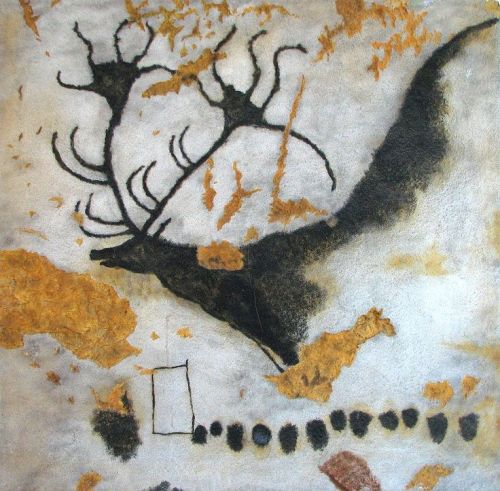#giant deer
Megaloceros
The Megaloceros, also known as the Irish Elk or Giant deer, is an extinct species of deer that lived throughout all of Eurasia. Most people however associate the Megaloceros with Ireland or other parts of Western Europe because most of its fossils have been found in Western Europe.
The name Megaloceros is Greek for ‘great horn’ and it is quite a justified name because this animal was huge with a magnificent pair of antlers. The shoulder height was about 2,1 meters tall but they could stand 3 meters tall with their antlers included. In comparison, their closest living relatives, the Fallow deer, have a shoulder height of about 85-95 centimeters.
The Megaloceros roamed around Europe and Asia from the early pleistocene, about 1,4 million years ago until their extinction around 11,000-8,000 years ago. Their antlers were absolutely gigantic and could reach a width of 3,7 meters. Just like other deer species, they would shed these mega antlers each year.
Why did this species of deer disappear? It was assumed for a long time that modern humans are responsible for their extinction but that theory is now no longer plausible. Homo Sapiens and the Megaloceros co-existed for several thousands of years and even though our ancestors might have hunted them, paleolithic modern humans did not mass slaughter animal species. The now accepted theory is that climate change combined with the effort of growing these huge antlers each year, which required the intake of lots of minerals, eventually led to the decline of this species.
The climate change led to the growth of new species of plants throughout Eurasia which meant that the diet of the Megaloceros changed drastically. These new plants did not contain as much minerals as the plants previously eaten by the Megaloceros which led to the weakening of bones and reduced antler growth. This would have led to more accidents and thus a reduced reproduction until the species eventually became extinct. Basically, their antlers became so big, that the Megaloceros was no longer able to support it.
Images of the Megaloceros survive until this very day in paleolithic cave art and the discovery of their bones. The most spectacular finds are being done around the borders of Doggerland, mainly around modern day Ireland. Irish fisherman Raymond McElroy found a complete intact skull with antlers during one of his fishing trips. This is how the animal got the nickname, Irish elk.
Here are images of:
Painting of a Megaloceros by Mihin89,
Reconstructed Megaloceros in the Naturalis, Leiden photographed by myself,
Raymond McElroy with the skull he found,
Cave art of the Megaloceros found in the Lascaux cave,
Post link




